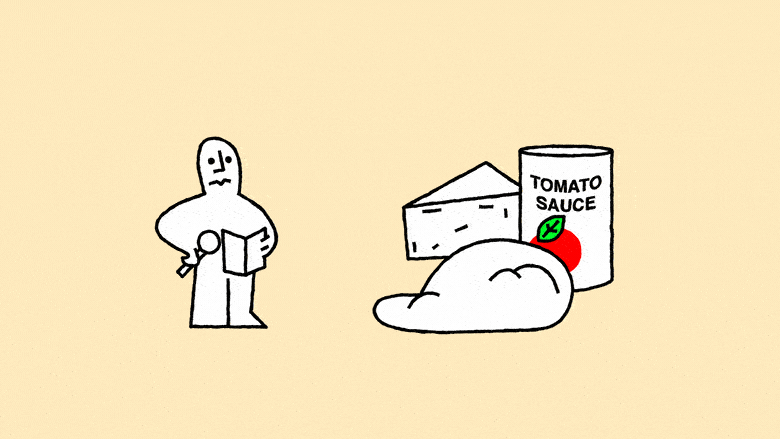
Fill, flop, and fold your way to calzone fluency.
Visit any legit Neapolitan pizza restaurant, or even the occasional neighborhood slice shop. Open the menu, and scan the list of pizzas. Pass the margherita, the pepperoni, the white pie with garlicky spinach, and there, at the bottom of the list, you may be lucky enough to spot it: the calzone.
Calzones are deceptively plain-looking, essentially a baked dough pocket named for men’s trousers. But within that modest brown blob lies a glorious white-hot ooze of fluffy, seasoned ricotta and flowing mozzarella. Pizza may be a “what you see is what you get” proposition, but the calzone has an element of surprise. Plus, thanks to their sealed pocket shape, calzones stay hot longer than pizza and allow for not just similar add-on ingredients but more of them.
“There has always been something about calzones for me,” says Mike Fadem, the co-owner of Brooklyn’s celebrated Ops pizzeria. “A calzone is the perfect vehicle for eating cheese and dough.”
Fadem always keeps a cheese calzone on the menu, with a rotating list of additional fillings like crumbled Italian sausage and tomato-braised kale, served with a side of marinara for dipping. The Ops calzone has achieved minor fame on social media, in the press (it’s one of restaurant critic Bill Addison’s favorites in New York), and by word of mouth for the perfectly stuffed, blistered pockets.
Calzones have been around for centuries, starting as a tidy grab-and-go option for 18th-century Italians. Yet in the panoply of pizza and its doughy family members (see, e.g., garlic knots), calzones often seem to rank as the last-place pony in pizza joints and home kitchens alike.
Next time you have designs on homemade pizza for dinner, flop that dough in half, and make it a cheesy calzone.
Yet calzones are a breeze to make at home. Fadem puts it directly: “Honestly, a calzone is harder to fuck up than pizza.” So next time you have designs on homemade pizza for dinner, flop that dough in half, and make it a cheesy calzone.
As long as you can handle a spoon and stretch pizza dough into a shape loosely resembling a circle (you can trim uneven edges), you can make a calzone. The simple fill-and-fold method makes calzones a perfect entry recipe for beginner pizza makers, and a great pizza-adjacent alternative for experienced pizzaioli looking for a change.
A home oven’s temperature limitations won’t hold you back here. Professional pizza ovens often bake pizza at temperatures around 900°F. But a home oven set to the relatively lower temperature of 500°F allows for pro-level exterior browning, with time for all the interior cheese and fillings to cook through.
To make calzones, gather a ball of room-temperature pizza dough (homemade is great, but so is a ball of dough picked up from your local pizza place), mozzarella cheese, fresh ricotta, and any additional fillings you might like to include. Cooked, crumbled Italian sausage; salami; or chopped broccoli rabe sautéed in olive oil and garlic are all good ideas. That said, plain ricotta and mozzarella cheese is the truest authentic Neapolitan version.
Generously dust an 8- or 9-ounce pizza dough with flour and spread it into a round on a greased baking sheet, as if making a pizza. Fadem recommends not using a peel at home, because calzones can be too heavy and moist to slide onto a pizza stone.
Once you have your thin, flattened round of dough, spread a big scoop of lightly seasoned ricotta, some grated mozzarella, and whatever other fillings you want over one half of the dough. Season with salt and pepper, and leave a small rim around the edge, like you would with a pizza crust.
Now seal the deal. Fold the plain half of pizza dough over the cheesy half, and press a seam around the edge to seal it. Make sure the seam is tightly closed. Sealing the dough well prevents cheese blowouts. You could slice an air vent in the top to release steam as it bakes, but many calzone makers leave it fully sealed; the cheese creates steam as it heats, puffing up the calzone when baked.
Before placing your calzone in the oven, brush the top with olive oil. Bake it for about 20 minutes, until the bottom and top crusts are nicely browned and crisp. While the calzone bakes, you may want to heat a bowl of marinara sauce for dipping. Remove your baked calzone from the oven, wait a few minutes, then thank yourself as you dig into your fluffy, cheesy triumph.